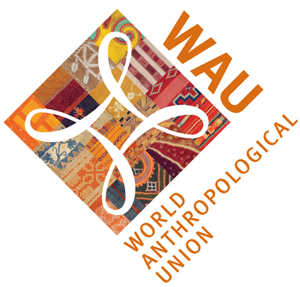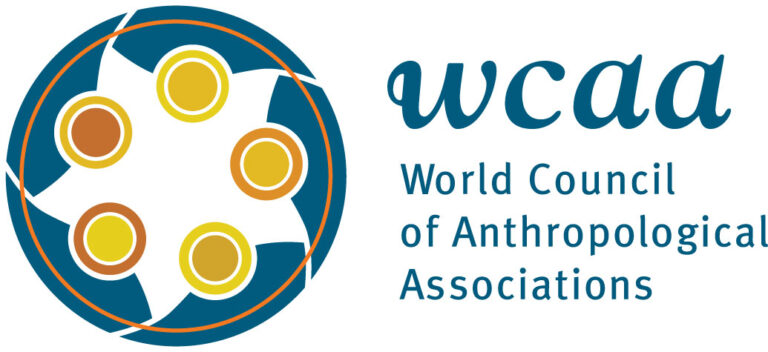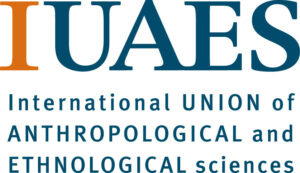Questions for Journal Editors for the Tenth Anniversary of Deja Lu
Betty Francia is editor of the journal Trama of the Asociación Uruguaya de Antropología Social y Cultural (AUAS). This interview was conducted on by Lía Ferrero. Translated by Lía Ferrero from Spanish
28 December 2021
Lía Ferrero: You are part of Trama’s history, you are not a recent editor, so the idea is for you to tell me a bit about how Trama was created, what discussions finally took shape in the journal, how the Association came up with the idea of producing a journal, since when it has been published, if it was always in the same format or if they changed format in the process of producing the journal, etc.
Bety Francia: The journal was born in 2009 as a project that AUAS (Asociación Uruguaya de Antropología Social y Cultural) had presented to the Accounting Funds of the Uruguayan Ministry of Education and Culture. The idea was to publish four issues and the subject was already given to us: “Culture and Heritage”. AUAS understood that it was necessary to disseminate the work of our colleagues, to have a space where we could have our own publications of the Association; the accounting fund gave us the possibility to support the journal for 4 years.
Trama seeks to promote anthropological research at the national level, encourage academic activities, and generate opportunities for dissemination, discussion and exchange of those activities. The first four issues were in print format. What happened to us then was that when we ran out of funds, we rethought how to continue, what we were going to do with the whole journal. We started to investigate a bit about online journals, about the academic committee, about the editorial one; in fact it was also happening that everything was being reconfigured at that time. Publishing the issues was, and still is, a lot of personal effort because today Trama, although it is financed by the Association’s funds, those of us who work on it do so on an honorary basis. There was a change of the entire editorial team, who had been supporting the journal for four years, and we understand that the printed format was, compared to today from a distance, much more tiring because it does not only involve the work of receiving the articles, sending them to be evaluated, proofreading them, which is what we usually do, you see? But they also had all the work of printing and distributing the journal.
Since we started to publish it in digital format, we decided to make it open access, and we have been modifying some issues. The journal was not indexed in the first four issues, and then the team that started working on the virtual format began the whole process of indexing. Trama is a very relevant for the Association because we also see it as a way of learning. Many of our members have worked in it, either in the editorial part as proofreaders, or publishing; we are always involved in Trama.
LF: In the first stage, what expenses did the grant you applied for cover?
BF: It covered the design, copy-editing and printing of a thousand copies, between the four issues. In reality it was a two-year grant, because the funds from the Ministry of Culture are for two years, but we managed to extend it to four years, bringing out one issue of the journal per year. And we continue to do it that way. Our challenge is to try to reach two issues per year but we haven’t achieved it yet. We also thought at one point that moving to thematic issues could make it easier for us to have two issues per year, but we haven’t achieved that yet.
LF: What was the transition to the virtual format like?
BF: At the beginning we made a PDF and posted it on our website (that lasted two issues), and then we moved on to an OJS (Open Journal Systems) platform—with issue 7 we started to work using OJS.. We only now have the OJS platform operational at its maximum, that is, we can send articles to be evaluated through the platform, and receive articles through there, but that only happened this year, it has been a long process.
LF: Do you have special thematic issues?
BF: We do. We keep inviting editors for special issues and it’s been like that for the last few years since 2017. In fact I think we managed to have a solid working structure when we made that decision, when we started to have a team of permanent editors and a team of guest editors working together.
LF: And how do these two teams work?
BF: Until this year (2021) I could tell you that it worked in an unorganized way. Last year, when we did the special edition of Trama for the 15th anniversary of AUAS and this year we managed to organize ourselves, I would say very well, it was like a leap in the internal organization of Trama. We have had a very high cost between proofreading and design, so to lower that cost, we decided to make a template for the articles. This first year, as there were no editorial guidelines, we did the work to fit the articles to those templates, and for next year the idea is to put it in our OJS platform, to be part of the editorial guidelines.
LF: You told me about the refereeing, what is the journal’s refereeing system like?
BF: It’s a double-blind system.
LF: Do you look for a balance between national and foreign peer-reviewers?
BF: No, no. It’s free depending on the subject. We always try to see who works on the subject in Uruguay. But I’ll be honest, in Uruguay there are few anthropologists, and there are at most two or three of us in each area, so we always have to look in other countries.
LF: Is the journal indexed?
BF: It is indexed in Latindex
LF: And did that involve any kind of adaptation or extra work, how did you deal with that?
BF: Not really. We’ve been doing it almost without realizing it, we’ve been doing it as if it were an indexed journal, that’s how it was planned from the beginning. Perhaps what we’ve found most difficult is to publish two issues a year, which we still haven’t managed to achieve. But afterwards we were more or less governed by the structure of an indexed journal without being indexed, we already did double-blind evaluation, a set of guidelines. For example we tried to ensure that colleagues from the journal’s editorial board or the board of directors of AUAS were not publishing or evaluating. We had all that in mind but we hadn’t thought about indexing and when we did it, it was like, “ah well, we did most of the things without having set out to do it.”
LF: How did you arrive at these criteria?
BF: We discuss almost everything. We understand that the journal has a policy that has to be in line with AUAS, we talk a lot about the articles to be published, we have a code of ethics, certain ethical rules that are very important for the Association. There is a very close dialogue between the editorial committee and the AUAS board and these discussions were basically held at the assemblies of AUAS. There is a part of the journal called Miradas Cruzadas, that part is not indexed, it is a part of the journal that does not fulfil the Latindex standards. And what is done there is very much open to what the invited editorial committee decides. For example, some editors transcribe the presentations or discussions at a conference, or a round-table, for example, and others do interviews with organized civil society groups, while others directly ask for papers, short essays of one or two pages or even news articles on the topic of interest of the special issue.
LF: What sections does the journal have?
BF: We have the editorial; we have the review, the articles in the special issue, an interview, Miradas Cruzadas and photographic essays according the special issue topic.
LF: You were telling me that the permanent editorial team is now three people, right?
BF: Three people, Pablo Gatti, Leticia Poliak and myself.
LF: Do you have any regulation as to whether any of those three people have to be on the AUAS board?
BF: No, no. At some point, at the first stages of the journal, we tried to have at least one of us who were part of the AUAS board, of the executive committee, but not now.
LF: Regarding the authors who send submissions to the journal, where are they from?
BF: It’s quite varied. A third are from Uruguay and the rest are from different parts of the world. They come from Latin America, always.
LF: And from Latin America, from any country in particular? In what languages do you publish then? In Spanish, and also in Portuguese?
BF: For example, we are now publishing one in portuñol (a mix between Spanish and Portuguese) and there has been a very interesting question related to the subject; we have received articles from Chile, Argentina, Brazil, Paraguay, etc.
LF: What would you say are the main problem(s) that the journal went through or is going through, and what would you say are the main challenges for the future of the journal?
BF: I think the problem we have is the calendar, I think we have to plan even more in the long term. I know it’s difficult but we ought to be able to have a calendar for at least three years. That would allow us to project ourselves in relation to our activities, in relation to the economic aspects, it would allow us to obtain funds; it is very important. I see that as a challenge.
LF: Is the editor’s work recognized among colleagues, on the one hand, and is it recognized when it comes to, for example, applying for a job? Does it count on a CV?
BF: It doesn’t count, you know, it doesn’t count.
LF: Yes, yes, it’s a lot of work, that makes it possible for those who publish in the journal to then take credit it for doing so.
BF: Of course, in a way it spills over positively to others, very positively, but not to the editor.



